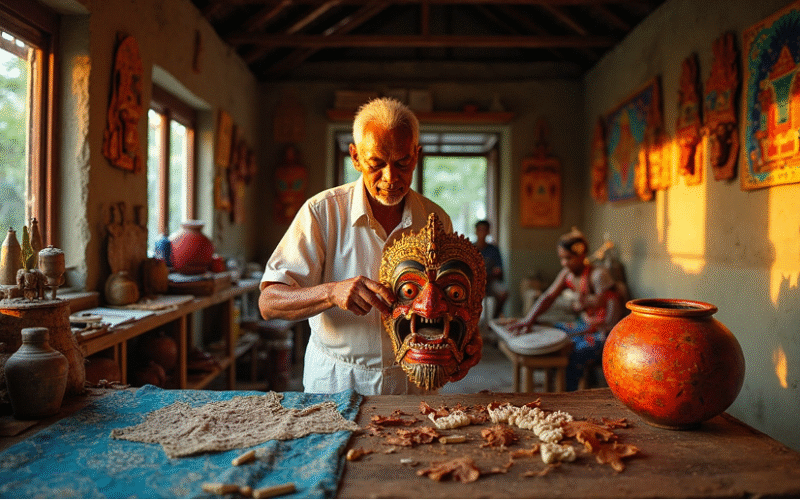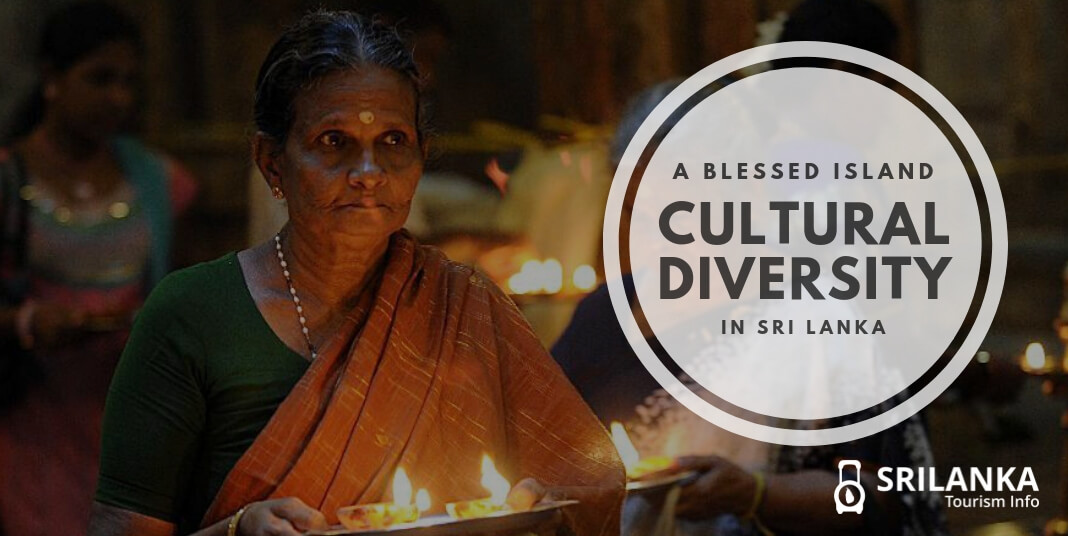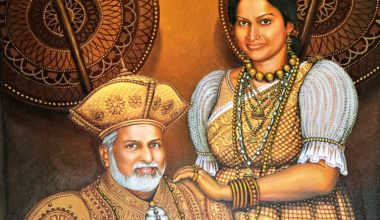Sri Lanka’s artistic heritage runs deep, with skills passed down carefully through generations. My extensive travels across this island nation have shown me that few places offer such a mixture of artistic expression.
The traditional art forms here are incredibly varied. They cover everything from lively Kandyan dance shows to detailed wooden mask-making. Living here over the last several years has let me see how these age-old practices stay alive today. These traditions shine especially when you have events like the Esala Perahera festival in Kandy – a spectacular procession that dates back to the 3rd Century BC.

These artistic traditions stand out because of their deep cultural roots. The colorful masks used in dance performances, to name just one example, belong to three distinct groups—Raksha, Sanni, and Kolam. Each group serves its own cultural purpose. The art of beeralu lace-making came with Portuguese settlers in the 16th Century and has grown into a thriving cottage industry along the southern coast.
Ancient Laaksha lacquerware made from Lac beetle resin still amazes visitors today. UNESCO-recognized Rukada Natya puppet shows feature handmade wooden puppets that captivate audiences. We’ve gathered the most authentic experiences for your visit. Let me show you 12 remarkable traditional art experiences that will revolutionize your Sri Lankan journey in 2025.
Kandyan Dance

Image Source: Hi DMC
Kandyan dance rhythms engage audiences with raw energy and cultural depth. Sri Lanka’s national dance represents the peak of traditional artistic expression that combines athletic prowess with spiritual significance.
Kandyan Dance Origins and History
Kandyan dance evolved from an ancient exorcism ritual called Kohomba Kankariya. Legend tells of a king from “Malaya Rata” and his brothers who performed this ritual to cure King Panduwasdev. The king suffered from a mysterious illness caused by black magic. The dance reached its peak under Kandyan kings from the 16th through 19th centuries. Dancers from a specific caste performed exclusively under the Kandyan feudal system. British colonial rule saw its popularity decline, yet this traditional Sri Lankan art has adapted well to modern audiences.
Kandyan Dance Cultural Significance
Kandyan dance preserves Sri Lankan cultural identity beyond its beauty. Males performed these dances that feature four distinct varieties: pantheru, naiyadi, udekki, and ves. The sacred Ves dance honors guardian deities and embodies pure Sri Lankan traditional art. Each performance narrates stories rooted in religious beliefs or folklore that pass cultural knowledge between generations. The dance remains vital to religious ceremonies at the Temple of the Tooth Relic and during the grand Dalada Perahera procession.
Where to Experience Kandyan Dance
Several venues offer authentic performances:
- Kandy Lake Club Cultural Dance Show, 41 years old, hosts daily performances
- Cultural shows near the Temple of the Tooth Relic
- The newly opened Cultural Center in Habarana offers an unmatched experience
- The annual Kandy Esala Perahera festival in July/August showcases spectacular displays
Kandyan Dance Techniques and Materials
This ancient Sri Lankan art form stands out with powerful footwork, leaps, and whirls. The Ves costume’s beauty comes from 64 ornaments called Su-Seta Abharana. The dancer’s headgear has a silver tiara, forehead plate, and seven silver ray-shaped spokes. Male dancers wear white cotton costumes with ornamented belts and silver breastplates. Female performers use simpler, modified attire. The Geta Beraya drum, used only in Kandyan dance, provides percussion accompaniment.
Kandyan Dance Pricing or Accessibility
Foreign adults pay USD 5-10 while children cost USD 3-5. Local visitors pay around 500 LKR. Shows run daily at 5:00 PM or 5:30 PM and last about an hour.
Best Time to Experience Kandyan Dance
Daily shows run throughout the year. The Kandy Esala Perahera festival in July/August offers the most spectacular experience. This grand celebration brings together Kandyan dancers and decorated elephants in a cultural spectacle that has lasted centuries.
Also Read: 10 Amazing Things to do in Sri Lanka
Wooden Mask-Making

Image Source: Pelago
Sri Lanka’s wooden mask-making craft stands among its most unique artistic traditions. These colorful masks have been part of the culture for centuries. Local people believe these masks have healing powers and can protect them from evil spirits. The masks originated from village ceremonies and rituals.
Wooden Mask-Making Origins and History
Sri Lankan wooden mask-making runs deep in the country’s folklore and history. Artists have passed this craft down through generations. The masks started as tools for exorcism rituals to heal sick people and drive away evil spirits. Over time, they became part of ceremonies and entertainment. The craft grew strong in southern coastal areas, where local artists created their own styles. While colonial times saw some decline, mask-making still connects people to Sri Lanka’s spiritual past.
Wooden Mask-Making Cultural Significance
Sri Lankan masks come in three main types:
- Kolam masks: These bring comic folk dances to life and appear in theater shows. They show everyone from villagers to kings
- Sanni masks: Healers use these in exorcism ceremonies to help people they think demons possess. There are 18 types, each for a specific illness
- Raksha masks: These come from myths about cobra-like creatures. People think they bring protection and hang them in homes to keep bad luck away
Where to Experience Wooden Mask-Making
Ambalangoda, a small town on the south coast, leads Sri Lanka’s mask-making scene. You’ll find many workshops and museums showing this art form here. The Ariyapala Masks Museum stands out as one of the oldest places keeping this tradition alive. You can also try hands-on sessions with skilled artists in Galle Fort, Negombo, and Weligama.
Wooden Mask-Making Techniques and Materials
Artists start by picking Kaduru wood (Strychnos nux-vomica) because it’s light and easy to carve. They cut and dry the wood, draw their design, and carefully carve it with chisels and mallets. Smoking the wood keeps insects away. The masks get their life from natural colors – clay, plants, minerals, and burnt cotton create red for power, yellow for divinity, and blue for sky or water. A coat of beeswax protects these colors.
Wooden Mask-Making Pricing or Accessibility
Workshop sessions run 1-3 hours. They include all materials, tools, and refreshments. Prices change based on location and what you want to learn. You can try full mask carving or just paint pre-carved masks. Beginners, artists, and families can all join in. Kids under 12 need adult supervision while carving.
Best Time to Experience Wooden Mask-Making
You can book mask-making workshops any time of year. The best experience comes during festivals when you’ll see these masks in action during shows and parades. This brings the true spirit of Sri Lankan mask art to life.
Batik Art

Image Source: Tripadvisor
Batik art stands as one of Sri Lanka’s most cherished textile traditions, known for its vibrant colors and intricate patterns. This resist-dyeing technique uses hot wax to create designs that resist dye penetration. The art form has become an integral part of Sri Lankan cultural heritage that draws both artisans and art enthusiasts.
Batik Art Origins and History
Dutch colonial officers brought batik to Sri Lanka in the 19th century from Indonesia, where the art form has ancient roots. The term “batik” comes from the Javanese word “ambatik,” which means “to write with drops.” Some researchers suggest that India or Sri Lanka might have introduced resist-dyeing techniques to Indonesian islands first. The art form flourished in Sri Lanka during the 1960s. Female artists like Ena de Silva created magnificent tapestries for iconic buildings in Colombo. The civil war in 1983 brought this thriving industry to a halt, yet dedicated artisans kept the tradition alive.
Batik Art Cultural Significance
Batik started as a hobby among elite and aristocratic ladies of the Kandyan court. The art form spread to artisan classes who created tapestries, regional flags, and traditional clothing. This cottage industry saw new life in the late 1970s with growing tourism. Each piece of batik now represents Sri Lanka’s cultural diversity and artistic heritage through its unique patterns and colors. UNESCO’s recognition of Indonesian batik as a Masterpiece of Oral and Intangible Heritage of Humanity in 2009 boosted appreciation for this art form across the region.
Where to Experience Batik Art
Kandy features several immersive batik experiences and workshops where you can create your own designs with expert guidance. The Interactive Batik Workshop in Kandy gives you hands-on practice with traditional tools and techniques. Local artisans’ studios near Ella welcome participants to learn the craft firsthand. Many batik studios in coastal regions invite tourists to watch or join the creation process.
Batik Art Techniques and Materials
Artists start the batik process by drawing designs on fabric, usually cotton or silk. They apply hot wax (a mix of paraffin and beeswax) using tools called tjanting (pronounced “chanting”) – copper instruments that work like pens for wax application. The fabric goes into dye baths, starting with lighter colors and moving to darker shades. Artists apply more wax between dye applications to preserve colors. Boiling water removes the wax to reveal the finished design. The signature crackle effect happens when wax cracks before dyeing, letting color seep into tiny fissures.
Batik Art Pricing or Accessibility
Workshop prices range from $90-100 per person. This includes all materials, tools, and often a traditional Sri Lankan lunch. Sessions typically run 3-5 hours and provide complete instruction from designing to dyeing. These workshops suit both beginners and experienced artists. Groups of family or friends can opt for individual-specific instruction through private sessions.
Best Time to Experience Batik Art
You can book batik workshops throughout the year. The dry season (December-March) offers ideal conditions that make fabric drying between dyeing processes faster.
Traditional Puppetry (Rukada Natya)

Image Source: disco.teak.fi
String puppets dance on makeshift stages and tell centuries-old stories through wooden characters that skilled hands bring to life. Rukada Natya, Sri Lanka’s traditional puppet drama, stands as the country’s only performance-based heritage recognized by UNESCO on their Intangible Cultural Heritage list.
Traditional Puppetry Origins and History
Sri Lankan puppetry’s roots date back to the 12th century when people used mechanical puppets to entertain during religious festivals. The art form we see today emerged in the late 18th century, likely brought from South India by Kandy’s ruling Tamil family. This ancient Sri Lankan art reached its peak in the late 19th century. A memorable performance took place in 1870 for Prince Alfred, Duke of Edinburgh, at the Bagatalle Walauwe mansion. The art form spread across the island before it started to fade in the mid-20th century.
Traditional Puppetry Cultural Significance
Rukada Natya does more than just entertain communities. Family groups of the Gamwari lineage living in southern coastal towns like Ambalangoda, Balapitiya, and Mirissa perform these shows. The performances pass down values that help people live together peacefully. Buddhist Jataka stories, historical tales, and current events blend with light-hearted humor in these shows. Yes, it is through these gatherings that community members “laugh together, enjoy together, and relax together,” which deepens their social bonds.
Where to Experience Traditional Puppetry
The southern coastal town of Ambalangoda remains the center of puppet-making in Sri Lanka today. The Traditional Puppet Art Museum displays this heritage, and you can catch performances at:
- Temple premises during religious festivals
- Cultural shows in Negombo
- Small permanent stages in tourist areas around Ambalangoda
- Private performances at select luxury hotels
Traditional Puppetry Techniques and Materials
Sri Lankan puppets stand out for their size, measuring 30-50 centimeters tall, with some historical pieces reaching over one meter. Craftsmen carve the heads, bodies, and arms from light Kaduru wood (Strychnos nux-vomica). The collection includes string puppets (Nool rukada), club puppets (Riti rukada), shadow puppets (Sevaneli rukada), and hand puppets (Ath rukada). Puppeteers work behind curtains and control these characters with strings attached to keyboards.
Traditional Puppetry Pricing or Accessibility
Temple premises, schools, and cultural centers host these performances, with support from individuals, religious associations, and organizations. Tourists can enjoy puppet shows at cultural centers or hotels for 1500-3000 LKR (about $5-10), which includes the art form’s history and significance.
Best Time to Experience Traditional Puppetry
May and June mark the traditional season for puppet performances at temple spaces. Religious festivals throughout the year feature puppet shows as well, giving you a chance to see this rare art form in its authentic setting.
Also read: Vesak Lanterns : Past to Present
Pottery and Ceramics

Image Source: A Muddy Road
Sri Lankan potters turn earth into art with their masterful skills. This ancient craft remains central to the island’s daily life. Their unbroken tradition dates back to the second century BCE, as proven by discoveries at Anuradhapura Gedige and Kandarodai in Jaffna.
Pottery and Ceramics Origins and History
Archeological findings near Thissamaharamaya uncovered pottery items from the second century BCE. These items included imported pieces that showed pottery’s importance in ancient trade networks. Clay vessels found in megalithic tombs of Ibbankatuwa near Dambulla date between 750-450 BCE. Excavations of a 3,000-year-old mud house in Udaranchamadama, Ratnapura revealed decorated clay pot shards crafted on a potter’s wheel. Pottery stayed essential through Sri Lanka’s historical periods—from Anuradhapura to Polonnaruwa to Kandyan eras.
Pottery and Ceramics Cultural Significance
Pottery began as a practical craft. People needed cooking pots, water vessels, and food storage containers. Religious practices used clay items like lamps and alms bowls. Modern cookware has changed things, but dedicated artisans work hard to preserve this heritage. They now create decorative pieces while keeping traditional methods alive.
Where to Experience Pottery and Ceramics
Sri Lanka offers several notable pottery destinations:
- Molagoda village in Kegalle district (Central Province) stands out for its distinctive red clay work
- Anuradhapura region creates both functional and decorative pottery inspired by its rich history
- Hanwella near Colombo serves urban markets
- Anuradha Ceramics leads Sri Lanka’s handmade pottery workshops
- Craft Tunnel – The Potter’s Retreat brings “craft tourism” through unique pottery experiences
Pottery and Ceramics Techniques and Materials
Sri Lankan pottery relies on three main clay types. Red clay serves common needs like tiles, bricks, and pottery. White clay works best for porcelain and ceramics. Ball clay, rich in kaolin, rounds out the selection. Traditional potters work with the “Sakaporuwa” wheel, which has evolved from manual to motorized operation. Pots dry before artisans shape them with tools like “Walantalana Lalla.” Square kilns fired by coconut husks and wood take about three days to complete the process.
Pottery and Ceramics Pricing or Accessibility
Visitors can try their hand at the potter’s wheel in most workshops. Many places serve herbal drinks in freshly made clay cups during sessions. Prices change based on location and experience type. These workshops cost less than other artistic experiences on the island.
Best Time to Experience Pottery and Ceramics
You can enjoy pottery workshops throughout the year. The dry season lets you see outdoor activities like sun-drying clay items at their best.
Drumming and Percussion

Image Source: Red Dot Tours
The rhythmic beats of drums and percussion instruments have been the heartbeat of Sri Lanka’s island traditions for thousands of years. These instruments speak their own language and create messages that surpass pure entertainment.
Drumming and Percussion Origins and History
Sri Lankan drumming traditions date back roughly 2500 years. Ancient texts like Pujawaliya, Thupawansaya, and Dalada Siritha mention many types of drums. Sri Lanka once had 33 different drums, though only about ten remain today. The development of these instruments reflects Sri Lanka’s native practices, Buddhist influences, and cultural connections with South India. Drumming gained prominence after Buddhism arrived in the 3rd century BCE and became a crucial part of religious ceremonies.
Drumming and Percussion Cultural Significance
Drums serve as more than musical instruments – they’re sophisticated communication tools. Different drums and rhythms once announced royal commands (Ana Bera), executions (Vada Bera), funeral processions (Mala Bera), and military movements (Rana Bera). Buddhist ceremonies use drums to mark beginnings, share symbolic messages, and strengthen community connections. Temples follow daily drumming rituals including Aluyam Duraya in the morning and Handa Duraya in the evening, with unique patterns on Poya days.
Where to Experience Drumming and Percussion
You can watch authentic performances at:
- Sri Dalada Maligawa (Temple of the Sacred Tooth Relic) in Kandy
- Rivisara Drums Institute for training and performances
- Cultural shows near Kandy town, including sessions with traditional teachers
- Interactive workshops 20 minutes from Kandy, featuring professional drummers
Drumming and Percussion Techniques and Materials
Sri Lanka’s main drums include:
- Geta Beraya (Kandyan drum): A barrel-shaped drum with two different skins that create distinct tones
- Yak Beraya (Low Country drum): A cylindrical drum played by hand during ritual dances
- Davula: A large cylindrical drum played with one hand and a stick (kadippuwa)
- Thammattama: Twin drums attached to the drummer’s waist, played with two sticks
- Rabana: A circular frame drum that comes in various sizes, popular during festivals
Local craftsmen create drums using jackfruit, kitul, mara, or coconut wood for the bodies, and treated animal hides (buffalo, cattle, or goat) for the surfaces.
Drumming and Percussion Pricing or Accessibility
Drum lessons cost between $5-10 for visitors and last 1.5-2 hours. These sessions include tea and cultural exchanges with teachers, making them available for people of all ages and skill levels.
Best Time to Experience Drumming and Percussion
Workshops run throughout the year. The most impressive displays happen during major Buddhist festivals, especially the Kandy Esala Perahera in July/August. Temples feature regular drumming performances, particularly on Poya (full moon) days
Beeralu Lace Weaving

Image Source: Roar Media Archive
Wooden bobbins weave through skilled fingers to create Beeralu lace—a captivating textile art that has adorned Sri Lanka’s coastal homes for centuries. This delicate craft blends colonial influences with local artistic adaptations and thrives despite modern challenges.
Beeralu Lace Origins and History
Portuguese colonists brought Beeralu lace weaving to Sri Lanka in the 16th century. The craft’s name tells its story—”beeralu” comes from the Portuguese word “bilro” for bobbin, while “renda” means lace in Portuguese. Some evidence points to earlier roots, as Malay migrants from southern Indonesia might have introduced parts of this detailed craft approximately 600 years ago. The art form reached its peak during Portuguese and Dutch colonial times and spread along the southern coast, especially in Galle and Matara districts.
Beeralu Lace Cultural Significance
Elite women in aristocratic circles first practiced this art, which grew into a vital cottage industry supporting coastal communities. The devastating 2004 tsunami destroyed many artisans’ homes and livelihoods. Since then, organizations, entrepreneurs, and designers have worked hard to revive the craft. Today, this traditional art helps over 300 women artisans in coastal areas earn a living. The craft also preserves a living heritage that mixes European techniques with unique Sri Lankan designs inspired by nature’s elements like ocean waves and palm fronds.
Where to Experience Beeralu Lace
Magalle village in Galle district stands as the center of Beeralu production. Visitors can watch artisans work on their verandas along the beach road between Weligama and Midigama from 8AM-12PM and 3-6PM. They avoid the midday heat. The Ceylon Beeralu Lace Weaving center in Galle shows demonstrations, while OTP Hotel arranges hands-on workshops at a local weaver’s home. Temples often display special exhibitions during full moon days.
Beeralu Lace Techniques and Materials
Artists start by drawing patterns on graph paper (koiru/ispisalaya) attached to a special pillow called “kotta boley” on a wooden base. They wind thread around wooden bobbins (beeralu) and weave threads carefully around pins placed in the pattern. This detailed work needs great skill—even expert lace-makers might spend a week creating one meter of inch-wide lace. Large pieces often need several weavers who combine their work into single designs.
Beeralu Lace Pricing or Accessibility
Authentic handmade lace items cost between USD 10-50 based on their complexity. Small decorative pieces like jewelry cost 250-600 LKR (about $1-3), and complete jewelry sets sell for around 1,000 LKR. Look for homes with “Lace Weaving” signs to buy directly. Middlemen often charge three to four times more than original prices.
Best Time to Experience Beeralu Lace
Production peaks from October through March when tourists visit most. Full moon days feature special temple exhibitions. December brings a lace festival that showcases the best pieces, giving visitors a chance to see outstanding examples of this traditional Sri Lankan art form.
Laaksha Lacquerwork

Image Source: 33 Lake Terrace
Red, yellow, and black swirls dance across wooden treasures created through Laaksha, a traditional lacquerwork technique that stands as one of Sri Lanka’s oldest artistic traditions. This detailed craft turns simple wooden objects into stunning works of art with natural resins and time-honored techniques.
Laaksha Lacquerwork Origins and History
Laaksha’s roots run deep in Sri Lanka’s history, dating back to Buddhism’s arrival on the island. Local legend tells us this art form came with the sapling of the sacred Sri Maha Bodhi tree from India. The craft has passed down through generations and managed to keep its cultural importance alive.
Laaksha Lacquerwork Cultural Significance
Laaksha handicrafts share a special bond with Kandy’s Temple of the Sacred Tooth Relic. The annual Esala Perahera procession features window frames, poles, flag poles, and ‘Sesath’ poles adorned with detailed Laaksha patterns. This traditional Sri Lankan art is proof of the island’s rich heritage and skilled craftsmanship.
Where to Experience Laaksha Lacquerwork
The craft started in three main regions—Kandy’s hills, Matale and Angul Maduwa in Matara. Pallehapuvida village in Matale now serves as the main hub for this craft. The National Crafts Council helped bring new life to the tradition in Angul Maduwa.
Laaksha Lacquerwork Techniques and Materials
The sort of thing I love about this ancient Sri Lankan art is its unique “painting” process that uses no brushes. Craftsmen start with carefully picked Kottamba wood that they carve and smooth. The lacquer comes from “lac” or “lakada,” a resin that Kerrialacca insects leave on shrubs and tree branches. Artists refine this resin, mix it with mineral dyes, and apply it to spinning wooden objects using a lathe and bow. They create distinct geometric patterns through two methods:
- “Niyapotten-Weda” (fingernail work): Artists use their fingernails to carve patterns into lacquer layers
- Carving knife technique: They scrape designs into outer lacquer layers
Laaksha Lacquerwork Pricing or Accessibility
Prices for finished lacquerware items change based on their complexity and size. Decorative boxes, jewelry, ceremonial pieces, and household items show how versatile and appealing this traditional art can be.
Best Time to Experience Laaksha Lacquerwork
You can visit workshops throughout the year. Major religious festivals are a great way to get a glimpse of lacquerwork in its ceremonial setting among other traditional Sri Lankan art forms.
Dumbara Mat Weaving

Image Source: Khiri Travel
Handwoven Dumbara mats, with their beautiful geometric patterns and ancient motifs, have earned their place in UNESCO’s intangible cultural heritage list. These distinctive Sri Lankan treasures showcase techniques that artisans have preserved for centuries.
Dumbara Mat Origins and History
The craft’s roots lie deep in Sri Lanka’s central highlands, specifically in the fertile Dumbara Valley. Local folk songs tell us the craft began with the legendary “original king of the human race” (mahāsammatha-raja). The Kinnara community made these ornamental mats for the royal palace from the 15th to 19th centuries. Royal patronage helped the craft flourish, and this legacy endures despite today’s challenges.
Dumbara Mat Cultural Significance
These mats mean more than just beautiful crafts to Sri Lankans. Their name “Dumbara ratā kalāla” reflects their geographic heritage, meaning “mats of Dumbara with ornamental motifs”. The government highlighted their cultural value in 1988 by renaming two key artisan villages: Hénāvala became Kalāsirigama (Village of Glorious Art) and Malhäva became Ālokagama (Village that Clarifies).
Where to Experience Dumbara Mat Weaving
You can watch authentic mat-weaving in these locations:
- Kalasirigama (formerly Henavala) in Menikhinna, Kandy district
- Alokagama near Yatawatta, Matale district
- The small town of Uda Dumbara, an hour from Kandy
The tradition lives on through 10-15 families in Menikhinna.
Dumbara Mat Techniques and Materials
Artisans start with the hana plant (Agave vera). They press leaves against a log using a sharp-edged piece of wood to reveal fibers. The fibers are washed, dried in the sun, and combed before being dyed with traditional herbal materials from the valley. The weaver uses a horizontal loom and a lath—a flat, narrow wooden strip with a hole—to create distinctive motifs. They pull fiber strands through this hole and between the yarns to form patterns.
Dumbara Mat Pricing or Accessibility
This traditional art appears in many forms—wall hangings, cushion covers, tablemats, handbags, and notebooks with woven covers. Prices depend on size and pattern complexity. The Craft Council Sri Lanka helps artisans find markets for their work, which helps keep the tradition alive.
Best Time to Experience Dumbara Mat Weaving
The weaving villages welcome visitors throughout the year. The Deshamanya Siva Obeysekere Crafts Gallery at Lakpahana features special exhibitions of handwoven Dumbara pieces. These exhibitions offer excellent opportunities to see masterpiece mats up close.
Temple Paintings and Frescoes

Image Source: Far Horizons
Buddhist tales come alive through vibrant colors and forms on Sri Lanka’s ancient temple walls and ceilings. These breathtaking murals showcase the island’s lasting artistic heritage and draw visitors with their deep spiritual meaning and artistic excellence.
Temple Paintings Origins and History
Sri Lanka has preserved its temple painting tradition for about 2,200 years, starting in the 3rd century BCE. These artworks stand as South Asia’s oldest Buddhist visual art outside India. Art historians have identified four key periods: the Classical Period (3rd century BCE-13th century AD), the Period of Migration (13th-17th centuries), the Kandyan Era (18th-19th centuries with distinct Kandyan and Southern schools), and the Modern Era (20th century onwards). Artists evolved their techniques while staying true to Buddhist themes through these periods.
Temple Paintings Cultural Significance
These paintings helped spread Buddha’s teachings, especially to people who couldn’t read religious texts. The murals show Buddha’s life, his previous births (Jataka stories), and scenes from daily life. Kandyan and Southern style artists used a special storytelling method with horizontal strips (theeru-theeru) that flow across temple walls.
Where to Experience Temple Paintings
You can find remarkable examples at:
- Dambulla Cave Temple houses over 150 Buddha sculptures under beautifully painted ceilings
- Sigiriya Rock features the renowned “Sigiriya Apsara” frescoes from the 5th century
- Kandy’s Temple of the Tooth displays extensive Kandyan-style artwork
- Kelaniya Raja Maha Viharaya showcases Solias Mendis’ masterpieces
- Bellanwila Temple highlights Somabandu Vidyapathi’s artistic genius
Temple Paintings Techniques and Materials
Artists worked on rock, brick walls, wooden doors, pillars, and cloth. They prepared surfaces with special plaster made from clay, sand, cotton debris, and paddy husks. Colors varied through different eras, with artists mainly using red, yellow, green, white, black, gold, and blue. They created most pigments from natural sources like minerals, plants, and clay.
Temple Paintings Pricing or Accessibility
Temples charge entry fees between 500-1500 LKR for locals and $10-30 for international visitors.
Best Time to Experience Temple Paintings
The dry season from December to March provides the best lighting conditions inside ancient temples.
Traditional Jewelry Crafting

Image Source: The Voice of Fashion
Sri Lankan jewelers transform precious metals into wearable art through their skilled craftsmanship. The island earned its nickname “Ratnadeepa” or “Gem Island” thanks to its jewelry-making tradition that spans 3,000 years.
Jewelry Crafting Origins and History
Archeologists have found jewelry pieces dating back to 1000 BCE in Sri Lankan burial grounds. The craft flourished under royal patronage through the centuries. Artisans worked in caste-based “guilds” and passed down family traditions. The tradition grew strong in Galle town during the mid-nineteenth century when wealthy entrepreneur families like the de Silvas and Hemchandras established their presence.
Jewelry Crafting Cultural Significance
Sri Lankan jewelry means more than just decoration—it serves as an investment, stores wealth, and carries deep symbolic meaning. Most women owned at least one piece of beautifully crafted gold or silver jewelry with precious stones. The tradition included men who wore different jewelry designs for almost every part of their body. People’s belief in the positive effects of certain metals and gems has kept this tradition alive.
Where to Experience Jewelry Crafting
Visitors can learn techniques like melting, soldering, and polishing at traditional jewelry-making workshops in Galle. These three-hour sessions are a great way to get hands-on experience with small groups of ten people. The workshop teaches age-old techniques passed down through generations.
Jewelry Crafting Techniques and Materials
Sri Lankan jewelry stands out for its filigree and granulation techniques. Master craftsmen create pieces using 22K yellow gold—the traditional purity standard, silver, and copper. Modern artists now work with platinum and colored gold varieties to attract younger buyers.
Jewelry Crafting Pricing or Accessibility
Students pay about 14 EUR for a three-hour jewelry-making class. Materials cost extra—a silver ring costs around 27 USD.
Best Time to Experience Jewelry Crafting
Workshops run throughout the year. Visitors can buy gems and custom-made jewelry at good prices. This traditional Sri Lankan art welcomes guests year-round without any seasonal restrictions.
Comparison Table
| Art Form | Historical Origins | Primary Locations | Main Materials | Cultural Significance | Price Range (USD) | Best Time to Experience |
|---|---|---|---|---|---|---|
| Kandyan Dance | Ancient ritual roots dating back to 16th-19th centuries | Kandy | Traditional costumes, silver ornaments | National dance, religious ceremonies | $5-10 per show | July/August (Esala Perahera) |
| Wooden Mask-Making | Rich history from pre-colonial times | Ambalangoda | Kaduru wood, natural pigments | Healing rituals, entertainment, protection | Varies by workshop | Year-round |
| Batik Art | Emerged during Dutch colonial era (19th century) | Kandy, Ella | Cotton/silk fabric, wax, dyes | Cultural heritage, artistic expression | $90-100 per workshop | December-March |
| Traditional Puppetry | Dates back to 12th century | Ambalangoda | Kaduru wood, strings | UNESCO heritage, community bonding | $5-10 per show | May-June festival season |
| Pottery and Ceramics | Origins from 2nd century BCE | Molagoda, Anuradhapura | Red clay, white clay, ball clay | Daily life, religious worship | Not mentioned | Year-round |
| Drumming and Percussion | Practiced since 2500 years ago | Kandy | Wood, animal hides | Religious ceremonies, communication | $5-10 per lesson | July/August (festivals) |
| Beeralu Lace | Started during Portuguese era (16th century) | Galle, Matara | Thread, wooden bobbins | Economic growth, colonial heritage | $10-50 per piece | October-March |
| Laaksha Lacquerwork | Rooted in ancient Buddhist times | Matale, Kandy | Wood, lac resin | Religious ceremonies, royal crafts | Not mentioned | Year-round |
| Dumbara Mat Weaving | Flourished between 15th-19th centuries | Kalasirigama, Alokagama | Hana plant fibers, natural dyes | UNESCO heritage, royal service | Not mentioned | Year-round |
| Temple Paintings | Traced back to 3rd century BCE | Dambulla, Sigiriya | Natural pigments, plaster | Buddhist teachings, storytelling | $10-30 temple entry | December-March |
| Traditional Jewelry | Originated around 1000 BCE | Galle | Gold, silver, gems | Wealth preservation, symbolic meaning | $14 per workshop | Year-round |
Conclusion
Sri Lanka is a living museum where artistic traditions have flourished for thousands of years. My exploration of the island showed me how these twelve art forms create living links to an ancient heritage. Each tradition weaves its own tale – from energetic Kandyan dancers in their detailed Ves costumes to patient Beeralu lace weavers who create delicate patterns in coastal villages.
These experiences feel real and authentic. You won’t find mass-produced souvenirs here. Traditional drum-making workshops and batik technique lessons give you a true taste of the culture. Local families who’ve practiced these crafts for generations are happy to share their techniques, stories, beliefs, and customs.
Modern times bring challenges, but these traditions stay strong. Many artisans adapt their work while keeping their traditional roots intact. UNESCO’s recognition of Dumbara mat weaving and Rukada puppet shows definitely proves their importance beyond Sri Lanka’s borders.
Planning a 2025 visit? Make time for two or three of these experiences. Cultural performances are great, but hands-on workshop participation creates deeper, more meaningful memories. Beginners are welcome at most sessions, and prices are nowhere near what you’d pay for similar cultural activities in other places.
Young generations now chase different dreams, leaving Sri Lankan artistic traditions at a crossroads. Your involvement does more than create memories – it helps keep these precious cultural practices alive for future generations. These living traditions might just become the highlight of your Sri Lankan adventure.
FAQs
Q1. What are some unique traditional art forms in Sri Lanka? Sri Lanka boasts a rich variety of traditional art forms, including Kandyan dance, wooden mask-making, batik art, puppetry, pottery, and temple paintings. Each of these art forms has a deep cultural significance and showcases the island’s artistic heritage.
Q2. Where can I experience authentic Sri Lankan crafts? You can experience authentic Sri Lankan crafts in various locations across the island. For example, you can witness Kandyan dance in Kandy, explore wooden mask-making in Ambalangoda, learn batik art in Kandy or Ella, and observe traditional puppetry in Ambalangoda.
Q3. Are there opportunities for hands-on experiences with Sri Lankan art? Yes, many traditional art forms offer hands-on experiences for visitors. You can participate in workshops for batik art, pottery, jewelry making, and even try your hand at traditional drumming. These experiences provide a deeper understanding of the techniques and cultural significance behind each art form.
Q4. What is the best time to experience Sri Lankan cultural events? While many art forms can be experienced year-round, some of the most spectacular displays occur during major festivals. The Kandy Esala Perahera in July/August is particularly noteworthy for its grand processions featuring traditional dance, music, and elaborate costumes.
Q5. How can tourists support traditional Sri Lankan arts? Tourists can support traditional Sri Lankan arts by participating in workshops, purchasing authentic handmade products, and visiting local artisan communities. Engaging with these art forms not only creates memorable experiences but also helps sustain these precious cultural practices for future generations.







